SOX17 regulates uterine epithelial-stromal cross-talk acting via a distal enhancer upstream of Ihh
- PMID: 30356064
- PMCID: PMC6200785
- DOI: 10.1038/s41467-018-06652-w
SOX17 regulates uterine epithelial-stromal cross-talk acting via a distal enhancer upstream of Ihh
Abstract
Mammalian pregnancy depends on the ability of the uterus to support embryo implantation. Previous studies reveal the Sox17 gene as a downstream target of the Pgr-Gata2-dependent transcription network that directs genomic actions in the uterine endometrium receptive for embryo implantation. Here, we report that ablating Sox17 in the uterine epithelium impairs leukemia inhibitory factor (LIF) and Indian hedgehog homolog (IHH) signaling, leading to failure of embryo implantation. In vivo deletion of the SOX17-binding region 19 kb upstream of the Ihh locus by CRISPR-Cas technology reduces Ihh expression specifically in the uterus and alters proper endometrial epithelial-stromal interactions, thereby impairing pregnancy. This SOX17-binding interval is also bound by GATA2, FOXA2, and PGR. This cluster of transcription factor binding is common in 737 uterine genes and may represent a key regulatory element essential for uterine epithelial gene expression.
Conflict of interest statement
The authors declare no competing interests.
Figures
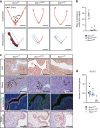
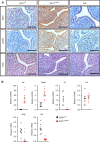
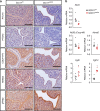
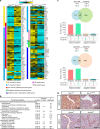
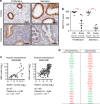
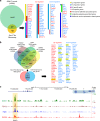
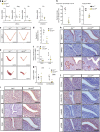
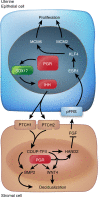
Similar articles
-
Mouse Sox17 haploinsufficiency leads to female subfertility due to impaired implantation.Sci Rep. 2016 Apr 7;6:24171. doi: 10.1038/srep24171. Sci Rep. 2016. PMID: 27053385 Free PMC article.
-
Conditional deletion of Sox17 reveals complex effects on uterine adenogenesis and function.Dev Biol. 2016 Jun 15;414(2):219-27. doi: 10.1016/j.ydbio.2016.04.010. Epub 2016 Apr 19. Dev Biol. 2016. PMID: 27102016 Free PMC article.
-
Upregulation of Indian hedgehog gene in the uterine epithelium by leukemia inhibitory factor during mouse implantation.J Reprod Dev. 2008 Apr;54(2):113-6. doi: 10.1262/jrd.19120. Epub 2008 Jan 30. J Reprod Dev. 2008. PMID: 18239353
-
Molecular mechanisms involved in progesterone receptor regulation of uterine function.J Steroid Biochem Mol Biol. 2006 Dec;102(1-5):41-50. doi: 10.1016/j.jsbmb.2006.09.006. Epub 2006 Oct 25. J Steroid Biochem Mol Biol. 2006. PMID: 17067792 Free PMC article. Review.
-
Mechanisms of uterine estrogen signaling during early pregnancy in mice: an update.J Mol Endocrinol. 2016 Apr;56(3):R127-38. doi: 10.1530/JME-15-0300. Epub 2016 Feb 17. J Mol Endocrinol. 2016. PMID: 26887389 Free PMC article. Review.
Cited by
-
Interleukin-13 receptor subunit alpha-2 is a target of progesterone receptor and steroid receptor coactivator-1 in the mouse uterus†.Biol Reprod. 2020 Oct 5;103(4):760-768. doi: 10.1093/biolre/ioaa110. Biol Reprod. 2020. PMID: 32558878 Free PMC article.
-
Increased FOXL2 expression alters uterine structures and functions†.Biol Reprod. 2020 Oct 29;103(5):951-965. doi: 10.1093/biolre/ioaa143. Biol Reprod. 2020. PMID: 32948877 Free PMC article.
-
Endometrial epithelial ARID1A is critical for uterine gland function in early pregnancy establishment.FASEB J. 2021 Feb;35(2):e21209. doi: 10.1096/fj.202002178R. Epub 2020 Nov 22. FASEB J. 2021. PMID: 33222288 Free PMC article.
-
Cellular heterogeneity and dynamics of the human uterus in healthy premenopausal women.Proc Natl Acad Sci U S A. 2024 Nov 5;121(45):e2404775121. doi: 10.1073/pnas.2404775121. Epub 2024 Oct 29. Proc Natl Acad Sci U S A. 2024. PMID: 39471215 Free PMC article.
-
Stromal Pbrm1 mediates chromatin remodeling necessary for embryo implantation in the mouse uterus.J Clin Invest. 2024 Mar 1;134(5):e174194. doi: 10.1172/JCI174194. J Clin Invest. 2024. PMID: 38426493 Free PMC article.
References
Publication types
MeSH terms
Substances
Grants and funding
LinkOut - more resources
Full Text Sources
Molecular Biology Databases
Research Materials

